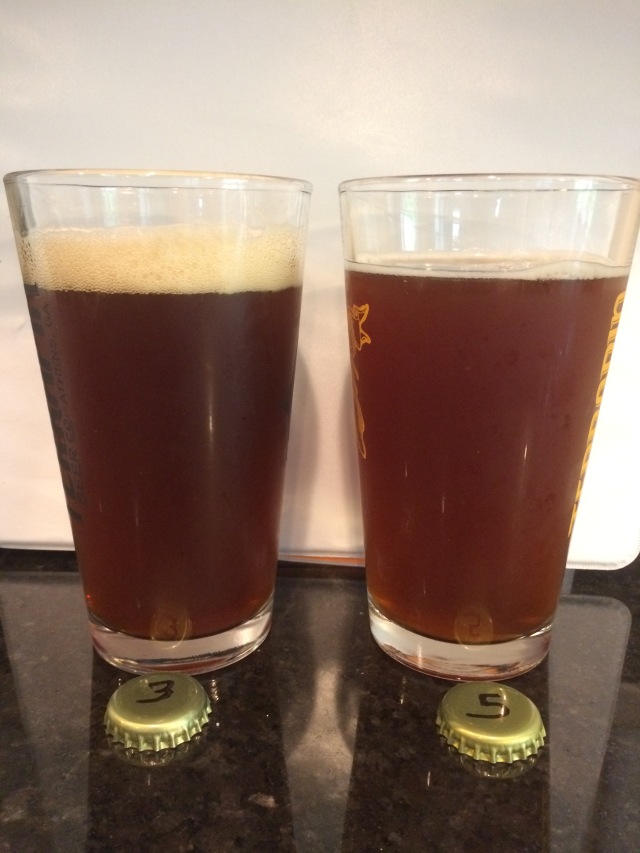This post is one in a series of making small adjustments to a single recipe in order to improve it, learn more about the impact each ingredient has on the finished product, and the art of recipe creation. The rest of the comparison tastings in this series can be found here.
As I declared that I’ve decided on my grain bill for this red IPA, this comparison tasting was a chance for me to see progress and to make sure that things had actually improved. Of course, with issues I’ve had before I was concerned this wouldn’t be a fair comparison, but that was fortunately not the case. Also, as I’ve mentioned before, I do understand the comparison will inherently be a little unfair because of the different ages of the beers. However, as I was mainly seeking to compare the malt profiles of these beers, it was less of an issue than it will be later once I begin to tweak my hop profile.
Recap
The differences between versions 3 and 5 of this recipe were malt differences only:
- Iteration 5 had 0.5 lbs. more malt total than Iteration 3.
- The base malt differences looked like this:
- Iteration 3 had 10.25 lbs. 2-row
- Iteration 5 had 10 lbs. 2-row and 1 lb. Vienna
- Iteration 5 had 0.25 lbs. more Crystal 120 than Iteration 3.
- Iteration 3 had 0.5 lbs. of Special B.
These beers had exactly the same OG and FG (1.056 and 1.008, respectively).
Appearance
Iteration 3 has a definite red color, whereas Iteration 5 is more of a copperish amber. Iteration 3 certainly has the better color of the two.
Iteration 3 had a thick layer of head on the top that had respectable staying power. Iteration 5, though, poured with a moderate head that dissipated quickly (so quickly that it was gone before I could take the picture). I will mention, though, that I’ve had varying levels of carbonation in Iteration 5, and this has also resulted in variable head amongst bottles. This difference is due to the use of a new capper, the newness of which resulted in me not achieving a proper seal on all bottles (which I didn’t realize until much later). Some have been downright flat, but I did make an effort to set aside bottles that had the appearance of a proper seal for comparison purposes.

Aroma
The aroma of Iteration 3 still had some hop aroma—floral and citrus notes. The more prominent scent, though, was the malt, which came off as plum and raisin.
Iteration 5 had a big citrus aroma with notes of cherry and plum coming through.
Flavor
Tasting Iteration 3 reminded me that this was probably my least favorite version of this recipe. It was a raisin bomb. The malt flavor reminded me of a raisin cookie, particularly that burnt sugar flavor from the dark, slightly burnt bottom of a cookie. This was the prominent flavor, but because I went hunting for it, I also got the faintest hint of citrus in the finish. All other hop flavor had disappeared or been completely overpowered by the other flavors.
Iteration 5 had flavors of citrus, plum, and cherry. There was also a moderately lingering bitterness, which was not unpleasant.
Final Thoughts
Time has not been kind to Iteration 3, and I actually struggled to drink the whole thing (which I’ve only ever had happen once before and that was with the second beer I ever brewed). Overall, this beer was once decent, but the Special B which was prominent before has become dominant to the point that it’s basically all I taste.
The aroma of Iteration 5 is the kind of balance I want. I want the hops to be prominent, but I do also want the malt to come through a little in the nose. This beer makes a fine red ale (outside of the color), and I would gladly and proudly share it with others as such. However, it is not yet red IPA status in terms of hops.
